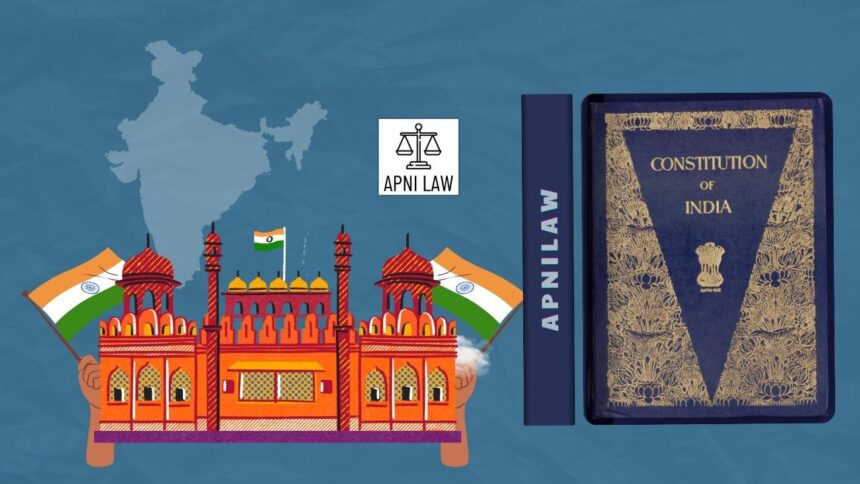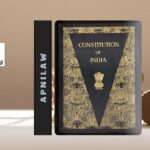Introduction
The Representation of the People Act, 1950 (RPA 1950) is one of the most significant electoral laws in India. It sets the legal foundation for elections before voting begins. This Act governs seat allocation, delimitation of constituencies, voter eligibility, and preparation of electoral rolls for both Parliament and State Legislatures.
What Is the Objective of the Representation of the People Act, 1950?
The main objective of the Act is to ensure free and fair elections by providing a clear legal framework for the electoral setup. It defines how constituencies are formed, who can vote, and how electoral rolls are maintained.
The Act also lays down the basis for seat allocation in the Lok Sabha, State Legislative Assemblies, and Legislative Councils. It ensures that every constituency represents an equal share of the population, maintaining democratic balance across India.
How Does the Act Handle Seat Allocation and Delimitation?
The Act provides a systematic process for allocation of seats to different states and delimitation of constituencies. Delimitation means the redrawing of constituency boundaries based on population data, usually after every Census.
This process ensures that every vote carries equal value, preventing overrepresentation or underrepresentation. The President of India, in consultation with the Election Commission, oversees this process to maintain fairness and transparency.
What Are the Voter Qualification Rules Under the Act?
The RPA 1950 defines who qualifies to vote in India. Every person who is:
- A citizen of India,
- 18 years or older, and
- Ordinarily resident in a constituency
is entitled to be registered as a voter.
The Act also specifies conditions for disqualification from voting, such as mental incapacity, non-residence, or disqualification under any other law.
How Are Electoral Rolls Prepared and Maintained?
One of the most important parts of the Act is the preparation of electoral rolls. These are the official lists of eligible voters for each constituency.
The rolls are revised regularly to include new voters, remove deceased persons, and update address or name changes. This ensures that only legitimate voters participate in elections.
The Election Commission of India supervises this process with the help of Chief Electoral Officers and Electoral Registration Officers at the state and district levels.
What Are the Provisions of the Act?
The Act provides several detailed mechanisms to strengthen India’s electoral system.
It establishes that all Lok Sabha and State Assembly seats are filled through direct elections from single-member constituencies.
It also ensures reservation of seats for Scheduled Castes (SCs) and Scheduled Tribes (STs) in Parliament and State Assemblies. These reservations promote political inclusion of marginalized groups.
The Act defines how vacancies are filled in the Rajya Sabha and Legislative Councils, especially for Union Territories. It also gives the President the power to modify constituency boundaries in consultation with the Election Commission.
How Does the Act Ensure Representation for Special Categories?
The Act allows special provisions for people with service qualifications, such as members of the Armed Forces, government officials posted abroad, and their families.
These individuals can be registered as voters in their home constituencies, even while living elsewhere. This ensures inclusive participation in the democratic process.
What Do the Schedules to the Act Contain?
The Act includes four important schedules that outline the distribution of seats and representation:
- First Schedule: Allocation of seats in the Lok Sabha among states and Union Territories.
- Second Schedule: Allocation of seats in State Legislative Assemblies.
- Third Schedule: Details regarding Legislative Councils.
- Fourth Schedule: Specifies the local authorities that elect members to the Legislative Councils.
These schedules provide the numerical framework for political representation across India.
What Is the Constitutional Basis of the Act?
The Representation of the People Act, 1950 draws authority from Articles 324, 327, and 328 of the Indian Constitution.
These articles empower Parliament to make laws related to elections, including seat allocation, delimitation, and electoral procedures.
This constitutional backing ensures that the electoral process operates within legal and democratic boundaries.
What Does the Act Exclude?
The RPA 1950 does not cover the actual conduct of elections. It deals only with the preparatory aspects such as seat allocation, constituency delimitation, and electoral rolls.
The Representation of the People Act, 1951, on the other hand, governs the conduct of elections, qualifications and disqualifications of candidates, electoral offenses, and dispute resolution.
Thus, both Acts work together,the 1950 Act provides the structure, while the 1951 Act manages the execution.
Why Is the Representation of the People Act, 1950 Important?
The Act plays a crucial role in maintaining the fairness and transparency of India’s electoral democracy. By defining the voter base and constituency structure, it ensures that every election starts on a level playing field.
Without this Act, the democratic process could be vulnerable to manipulation or irregularities in voter lists and constituency boundaries.
The RPA 1950 establishes a stable and reliable electoral foundation, upholding the principles of equality, representation, and participation enshrined in the Constitution.
For any specific query call at +91 – 8569843472
Conclusion
The Representation of the People Act, 1950 is the cornerstone of India’s electoral framework. It sets the stage for fair elections by defining constituencies, allocating seats, and regulating voter registration.
Together with the 1951 Act, it ensures that India’s electoral system remains transparent, inclusive, and constitutionally sound. The law continues to support the integrity of Indian democracy, enabling citizens to exercise their right to vote on a strong and fair foundation.








